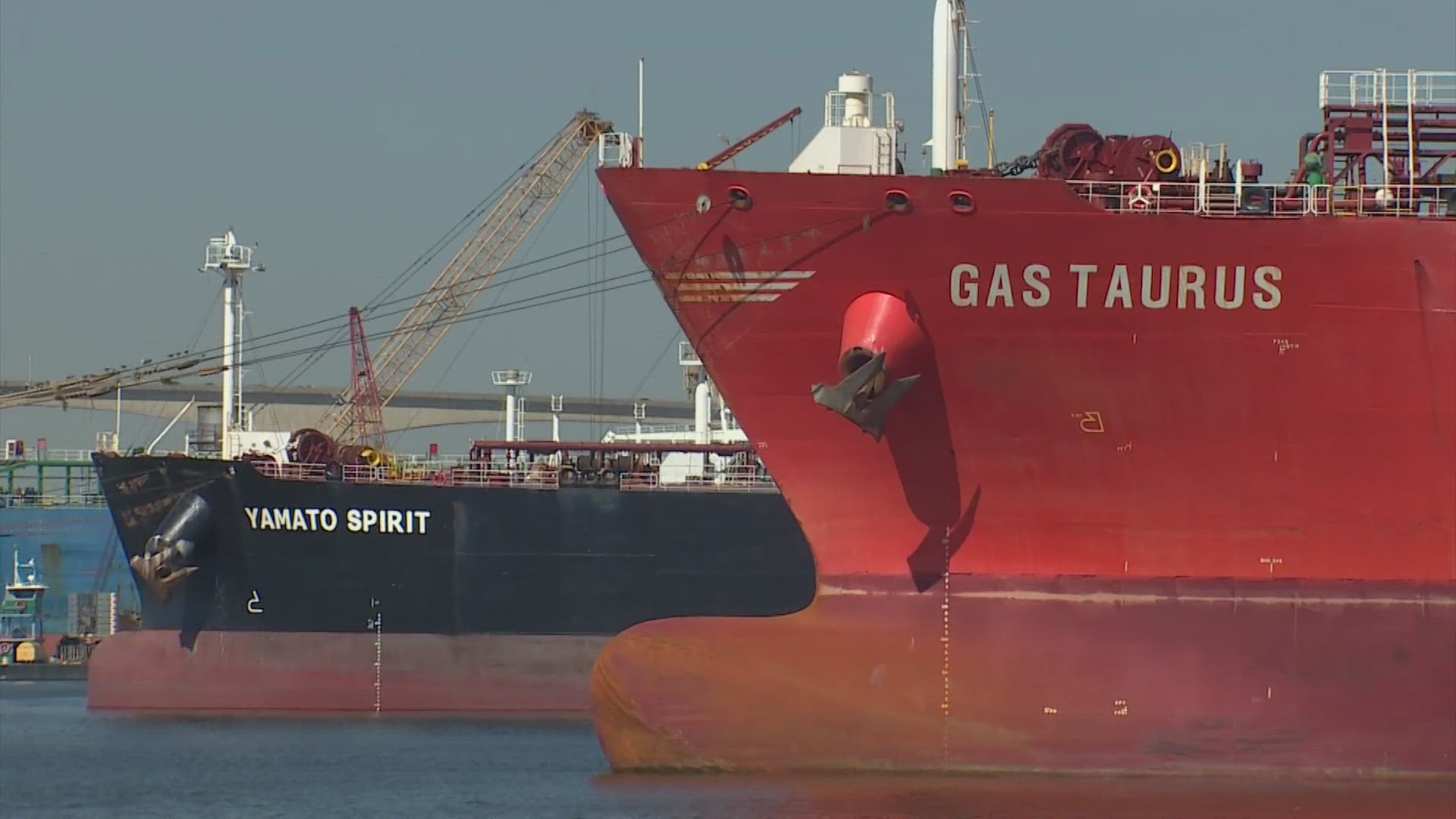HOUSTON — Less than two weeks ago, a pipeline fire erupted in Deer Park sparking questions about pipeline safety not just on land, but underwater.
Houston is the energy capital of the world and is home to one of the country's busiest ports with a network of underwater pipelines.
"We're able to move 20,000 ship moves a year. It's more than LA and New York combined," Clint Winegar, with Houston Pilots, said.
Navigating the petrochemical industry can be tricky -- not just above the water line.
There are 250 pipelines across the Port of Houston. They feed the refineries, plants, and ships.
Marine Safe Texas 811 Director Ed Landgraf said their mission is to educate mariners so they know where the pipelines are and how to avoid them. If there's a liquid pipeline spill on the water like on a river, the entire river can shut down.
Signs and flags mark potential danger zones but even with a National Pipeline Task Force, accidents happen.
Landgraf said, on average, one fatality happens every year involving some type of marine vessel inadvertently contacting some type of pipeline.
Houston Pilots provides pilots to navigate all regulated ships entering or leaving the 52-mile stretch of the Houston Ship Channel.
"When we get on a vessel, we climb up and bring a navigation computer with us. And on that navigation computer actually shows what those pipeline crossings are," Winegar said.
Their goal is to avoid trouble and anchor safely if needed. In some places, it's a tight squeeze from the bottom of a ship to the bottom of the ship channel.
"We're talking about no more than 2 or 3 feet," Winegar said.
He said the ship channel has a muddy bottom, making it more forgiving. The depths of pipelines vary, but at minimum, they are 20 feet underground.

